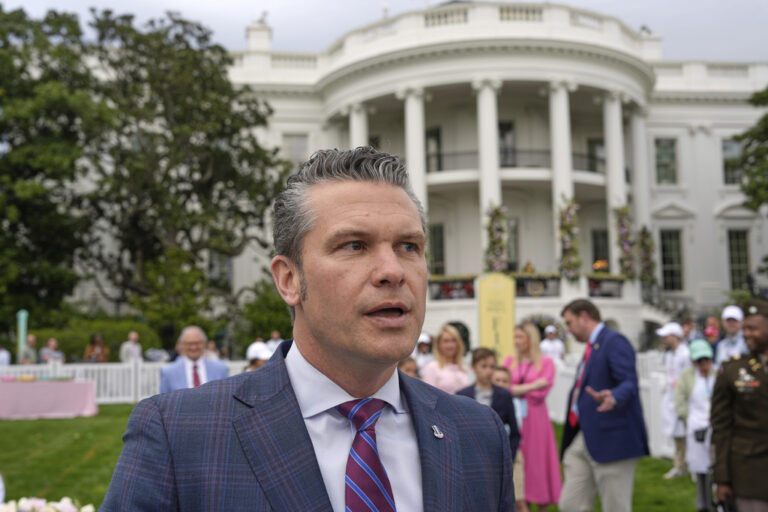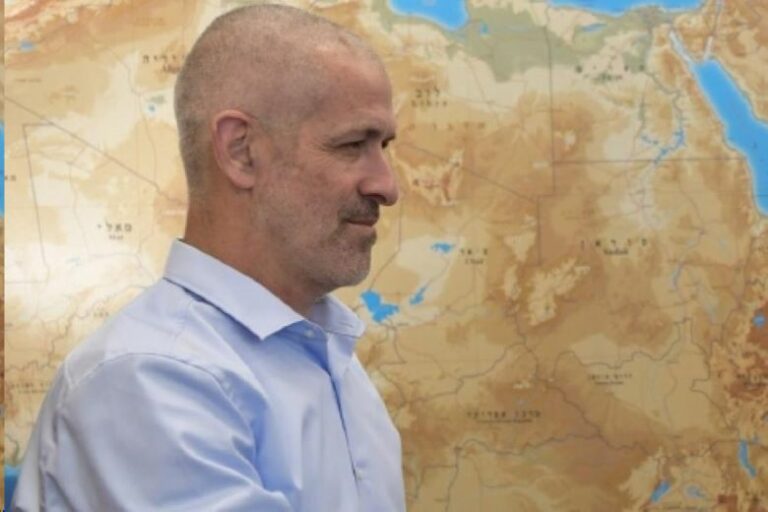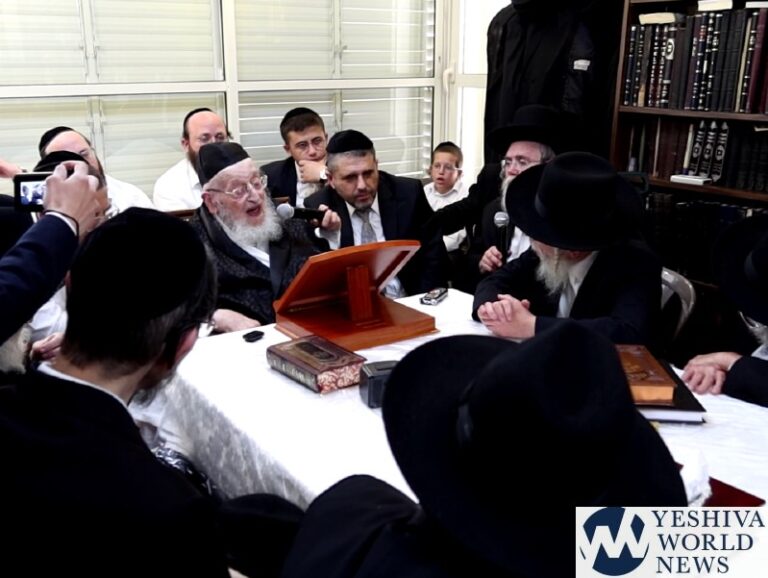V’chol hanashim asher nasah liban osana b’chochma tavu es ha’izim (35:26)
Rashi writes that the women displayed special skills and wisdom in spinning the goats’ hair while it was still attached to the goats. Why did the women spin the hair in this seemingly awkward and inefficient manner, and what unique intelligence did they display in doing so?
The Ostrovtzer Rebbe explains that the women feared that they would be exempt from the mitzvah to build the Mishkan. As it may not be built on Shabbos (Rashi 35:2), it is considered a positive time-bound commandment, in which women are not obligated. Although a person who is exempt from a mitzvah and nevertheless performs it receives reward for his actions, the Gemora in Kiddushin (31a) teaches that the reward for a person who is obligated in a mitzvah is much greater.
The reason why the Mishkan may not be built on Shabbos is that the creative labors involved in its construction are forbidden on Shabbos. However, it is Biblically permissible to perform the 39 forbidden activities in an unusual way. Therefore, the women specifically spun the goats’ hair in an unconventional fashion which is Biblically permitted on Shabbos in order to demonstrate that it is possible to work on the construction of the Mishkan even on Shabbos. If so, it is no longer considered a time-bound commandment, which would mean that the women were obligated to assist with it, thereby making them eligible for a much larger reward.
Alternatively, Rav Yonason Eibeshutz suggests that among the Jewish women, there were surely some who were ritually impure at the time. Those women feared that they would be left out of the building of the Mishkan, as any item they touched would immediately contract their impurity and be rendered unfit for use in the Mishkan. However, they wisely recognized that live animals don’t become impure through contact. By spinning the hair while it was still attached to the live goats, they were able to have a share in the Mishkan’s construction without rendering it impure.
Finally, Rav Shlomo Kluger and the Imrei Emes explain that the women of the generation desperately wanted to contribute to the building of the Mishkan. However, they recognized that Jewish law views any acquisition of a woman as belonging to her husband (Sanhedrin 71a), apparently leaving them without any possessions of their own to donate.
However, the women realized that the Gemora in Kesuvos explains (47b) that whatever a woman produces, which should rightfully be hers, belongs to her husband as a result of a Rabbinical decree requiring him to provide her with food to eat. Recognizing that in the desert they were miraculously sustained by the Manna which fell daily, the women had no need to receive food from their husbands. Therefore, they wisely chose to keep what they produced – including the goat-hair – for themselves so that they could donate their own possessions to the Mishkan.
Vayevareich osam Moshe (39:43)
After all of the requisite components of the Mishkan had finally been built and were ready to be assembled, they were brought to Moshe for inspection. After determining that everything had been done precisely as Hashem had commanded, the Torah records that Moshe blessed the people, but omits the content of his blessing. Rashi elucidates that Moshe blessed the people that the Divine Presence should rest upon their work. Although this is a meaningful blessing, it seems completely unnecessary. Hadn’t Hashem already promised the Jewish people (25:8) that if they built the Mishkan according to His instructions that He would dwell within? Was Moshe simply blessing the people that Hashem should keep His word to them?
The lesson of the following story will help us appreciate the profound depth of Moshe’s true blessing. A businessman once approached Rav Yehuda Assad for advice about a potential venture. He explained that an abandoned lot was for sale for a good price, and he was confident that with his entrepreneurial skills and hard work, he would be able to build a business there which would be very successful. After listening to the details of the proposal, the Rav advised him not to proceed.
A short while later, a second man came to Rav Assad to inquire about purchasing the identical piece of property. In presenting his case for wanting to do so, the man explained that he was optimistic that with a lot of effort and Heavenly assistance, he would make a nice profit from the project. After listening to the man’s reasoning, the Rav agreed that the opportunity was a good one and encouraged him to pursue it.
When the original businessman heard that somebody else had purchased the property with the support of the Rav, he was quite upset and approached Rav Assad to demand an explanation for his seemingly contradictory advice. The Rav explained that as he listened to each of the two men explain their rationales for wanting to buy the lot, there was one critical difference between them.
The first man had assumed that he would be successful solely due to his talents and hard work, a formula that the Rav recognized was doomed to failure, so he advised against going ahead with the deal. The second advice-seeker, on the other hand, had said that he was hopeful that his efforts combined with Hashem’s help would enable him to make a profit. When the Rav heard him include Hashem in his calculations, he saw the potential for success and recommended that the man proceed with his plan.
In light of this story, Rav Mordechai Kamenetzky suggests that when the Jewish people brought the parts of the Mishkan to Moshe for assembly, he became concerned. For the first time since the Exodus from Egypt, they had undertaken a project which required tremendous artistry and craftsmanship. There was a danger that the people would fall prey to the temptation to arrogantly take credit for their creation. Although Hashem had promised to dwell in the assembled Mishkan, Moshe was worried that, just like the first businessman, the people might be so focused on their own sense of achievement that they might not be interested in partnering with Hashem. Therefore, Moshe blessed them that they should never forget that everything that they had accomplished was only because of Hashem’s assistance, and they should recognize that their ultimate success would be determined by their willingness to allow the Divine Presence to enter the beautiful edifice that they were about to assemble.
Vayikach vayitein es ha’Eidus el ha’Aron (40:20)
Hashem commanded Moshe (25:16) to place in the Ark the “testimony” which Hashem would give him. Rashi explains that this is a reference to the Torah and the Tablets which bear witness to the fact that Hashem commanded us regarding the mitzvos which are contained therein. Rav Zalman Sorotzkin questions the value of having a Sefer Torah placed in the Aron in the Kodesh Kodashim, a place where it would never be used or even seen as nobody but the Kohen Gadol on Yom Kippur was allowed to enter there.
The Medrash explains (Devorim Rabbah 9:9) that the public awareness that hidden deep in the inner recesses of the Beis HaMikdash was a 100% authentic Sefer Torah written by Moshe himself acted as a powerful deterrent to any would-be forger. Anybody who entertained the possibility of denying some of the mitzvos and supporting his claims by writing a falsified Sefer Torah which omits them would refrain due to the recognition that if he did so, it would be possible to bring out Moshe’s authentic Torah from the Aron to compare, thereby proving him wrong and exposing his malicious intent.
In a eulogy on the great Brisker Rav, Rav Yitzchok Zev Soloveitchik, Rav Sorotzkin suggested that the Brisker Rav had similarly isolated himself from most of the world, confining himself all day to the learning and teaching of Torah to a few select students in his house. Although he eschewed a public and social role, his value as the last remaining vestige of the Torah-true Judaism of Brisk was inestimable. As long as the Brisker Rav was alive, anybody who dared question the smallest custom and attempted to alter the mesorah (tradition) from Europe knew that his claims would be immediately and sharply rebuffed by the Brisker Rav, the authentic Sefer Torah who was no longer.
Answers to the weekly Points to Ponder are now available!
To receive the full version with answers email the author at [email protected].
Parsha Points to Ponder (and sources which discuss them):
1) There are 39 creative labors that are forbidden to do on Shabbos. Why does the Torah emphasize (35:3) the prohibition against kindling a fire more than the other 38 labors? (Tiferes Yehonason)
2) Why did Hashem select Oholiav to build the Mishkan with Betzalel? (Shemos Rabbah 40:4)
3) The Medrash teaches (Tanchuma 7) that Moshe made an accounting for the use of the materials that were donated for the Mishkan because some Jews questioned where all of their donations had gone and whether Moshe had kept any of them for himself. Why didn’t they similarly demand an accounting from Aharon, who collected a large amount of gold from them and managed to produce from it only one small golden calf? (Oznayim L’Torah, Bishvilei HaParsha)
4) Why throughout Parshas Pekudei does the Torah repeatedly emphasize that each of the garments of the Kohanim was made “just as Hashem commanded Moshe,” yet no such mention is made in Parshas Vayakhel about the construction of the vessels for the Mishkan? (Meshech Chochmah)
© 2011 by Oizer Alport.










